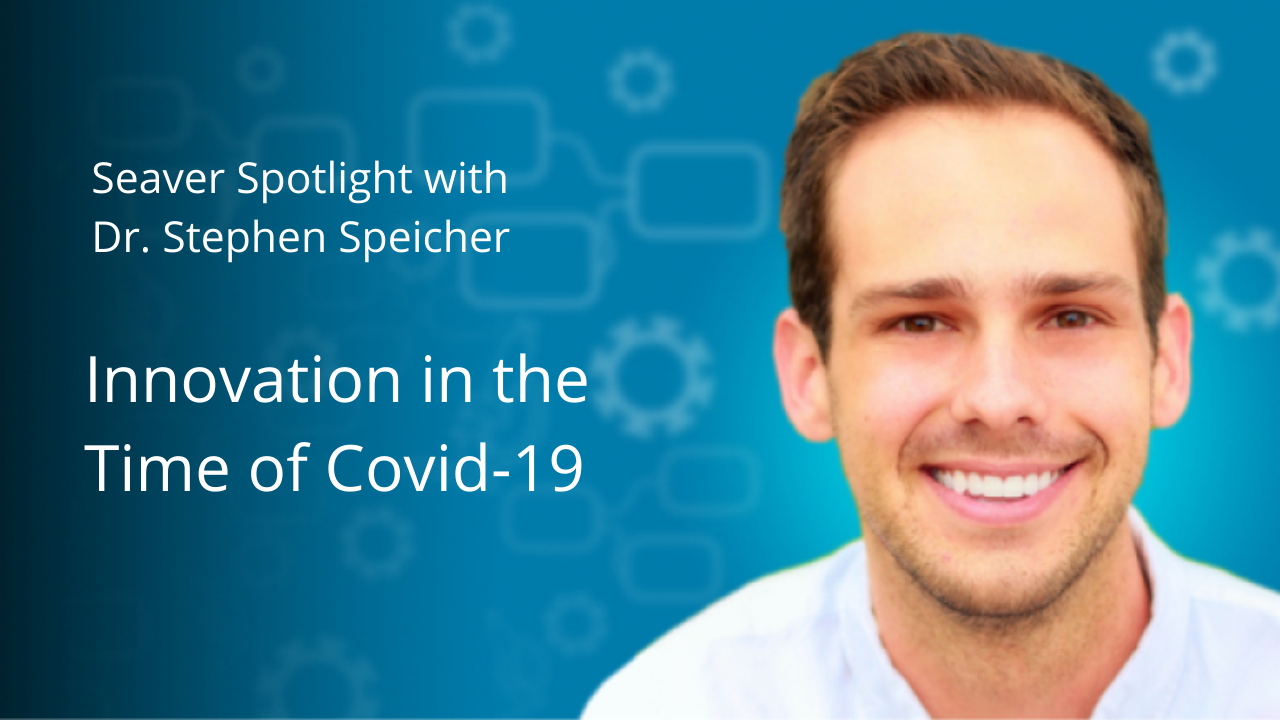Seaver Spotlight with Stephen Speicher
Interdisciplinary Innovation Key to Improving Health Care System
There’s much that works with our current health care system, but a lot that needs improvement. And according to Loyola Marymount University alumnus Stephen Speicher, the thing that’s going to improve the current system is interdisciplinary innovation.
Speicher, who earned a bachelor’s degree in biology and a master’s degree in health care system engineering from LMU, and a medical degree from UCLA, told more than 200 students, alumni, faculty and university staff during an online Seaver Spotlight event on Wednesday, Oct. 7, that it’s not a lack of resources as many attendees responded in an electronic poll during the event, but rather a lack of collaborative innovation that’s needed to solve the pressing problems in health care delivery.
“Innovation takes the process of creativity one step farther by implementing solutions,” said Speicher, a pediatrician who works now as associate medical director of patient safety programs at Flatiron Health, a New York company dedicated to accelerating cancer research and quality of care. “There are a lot of smart people in health care—they’re not all doctors—and if we could just get the right people in a room, that can help inspire major changes in healthcare.”
Speicher gave real-life examples of multidisciplinary collaboration in UCLA’s response to the COVID-19 pandemic. While serving as a fellow in UCLA’s biodesign program, he helped coordinate some of the health system’s preparation for the novel coronavirus this past July.
During the Spotlight talk, Speicher asked participants to rank the following in terms of priority in readying UCLA for the pandemic:
- Readiness for a surge
- Appropriate treatment protocols
- Availability of Personal Protective Equipment (PPE)
- Adequacy testing capability
“That was a trick question,” Speicher said. “We had to do all those simultaneously.”
Early on, it was clear UCLA didn’t have enough swabs to test as many people as possible as quickly as possible. Speicher and others led an innovative effort to identify 3-D printers on campus and in the community and work with designers and the FDA to print thousands of usable swabs.
They took the same interdisciplinary approach, collaborating with engineering groups, labs, medical students, UCLA’s dental school, and others in the community to find the raw materials to produce tens of thousands of face shields and intubation boxes to protect doctors intubating COVID-19 patients.
They developed plans to turn parking lots into hospital wards and operating theaters into intensive care units.
Speicher encouraged Seaver students to adopt a spirit of innovation in their daily lives and pursue as many of their interests as possible, ensuring them that it would ultimately pay off in their careers.
His own career developed less in a linear path from BS to MD to treating patients, and ultimately more like puzzle pieces fitted together as his varied interests overlapped and coincided.
“Journeys are not always what you expect them to be,” said Speicher. “My expectation was a linear path to a career as a doctor. That’s not necessarily how things will go, but it may turn out better than you expect.”
